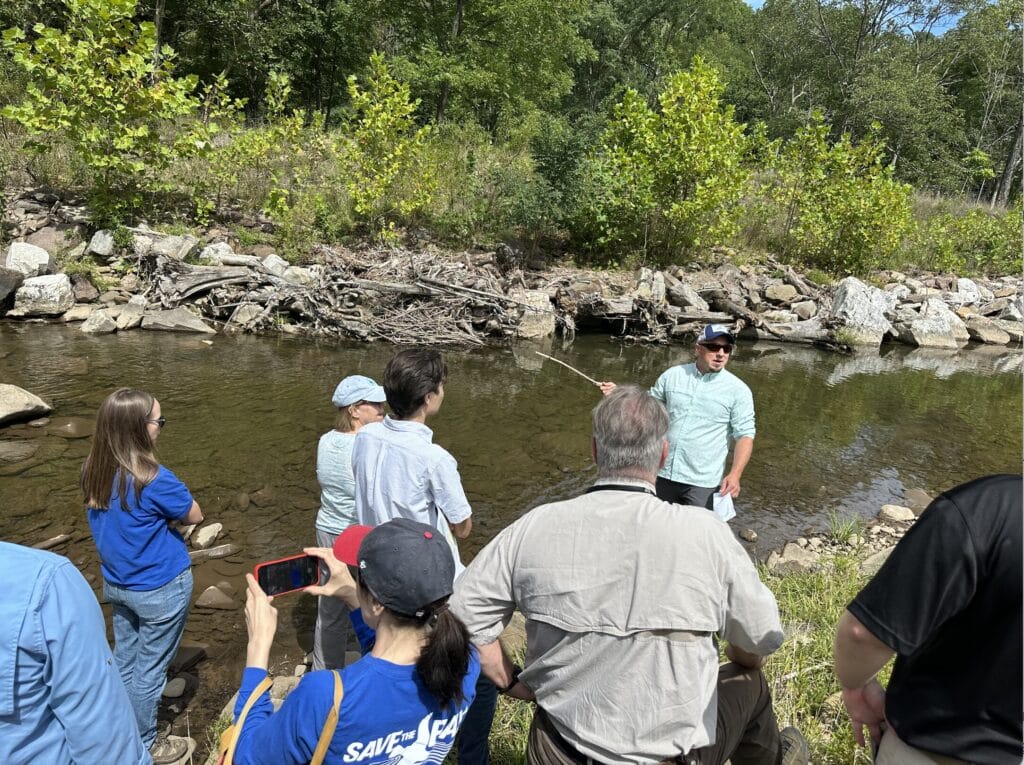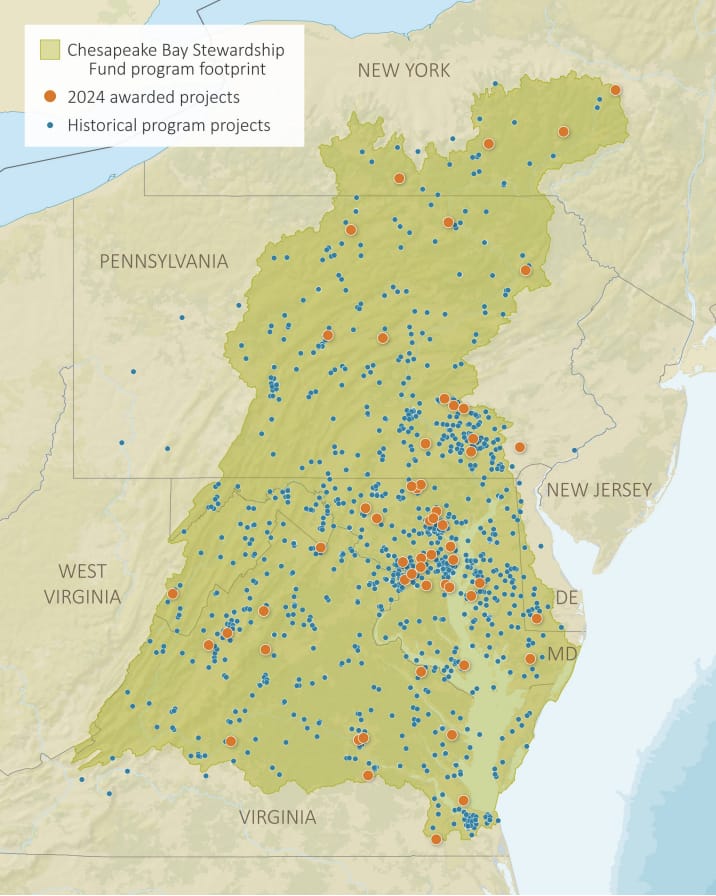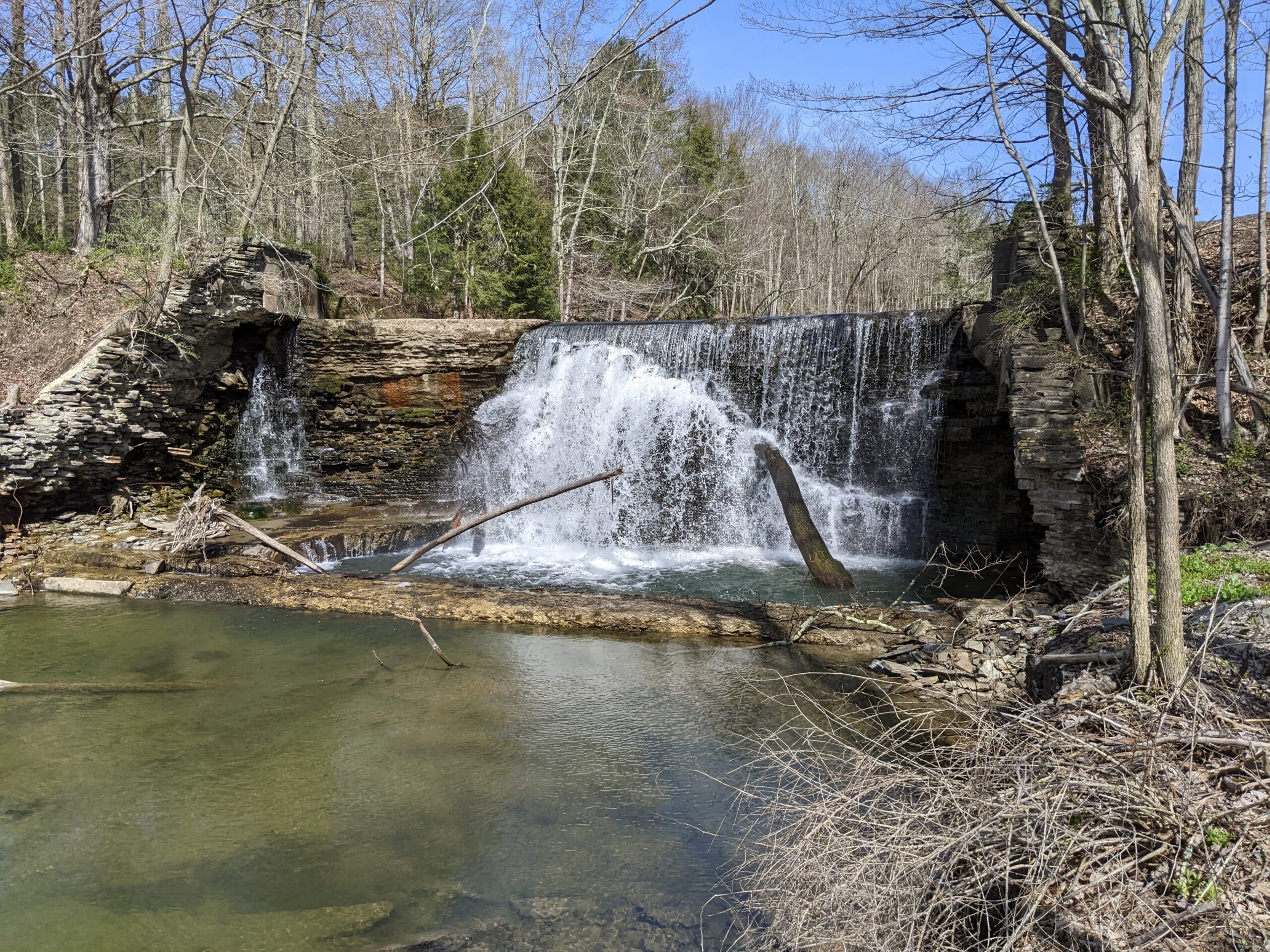$3 million in grants will help TU continue restoration work in the Chesapeake Bay watershed
The best way to talk about future plans is to show stellar results from similar, previous plans.
That was the agenda for a recent gathering in the shadow of West Virginia’s iconic Seneca Rocks and a tour of restored trout streams in Pendleton County. Leaders from Trout Unlimited and many partners were on hand to celebrate a new slate of grants that will help continue coldwater restoration efforts in the Mountain State and beyond.
The awards announced in early September are part of the Chesapeake Small Watershed Grants Program, a partnership program with the Environmental Protection Agency administered by the National Fish and Wildlife Foundation (NFWF).

The $23.8 million in funding will be spread among 56 separate grants, with total impact rising to nearly $37 million when matching contributions are included. The projects will be spread throughout the 64,000 square mile watershed, which covers six states and Washington DC.
Many of the specific projects planned by Trout Unlimited fall in watersheds featured in TU’s Priority Waters initiative.
“It makes a difference,” Martha Shimpkin, director of the EPA’s Chesapeake Bay office, said of the Chesapeake Bay grants. “Not only for the local waters and for the people of West Virginia and the people of the other states, but for the Bay itself.”
Past work shows impact of investments

Trout Unlimited has been working extensively for decades in the Chesapeake watershed, contributing to an effort that has led to water quality improvements in the Bay, though there remains a long way to go.
The impact in West Virginia was on display as the more than two dozen people on the tour saw on-the-ground examples of restoration work.
At the Seneca Rocks visitors center, TU’s Dustin Wichterman pointed out restoration work in the lower reaches of Seneca Creek, near where that stream flows into the North Fork of the South Branch of the Potomac.
“We’re standing in one of the most robust brook trout patches south of Maine,” Wichterman said. “Trout Unlimited’s Potomac Headwaters Home River’s Initiative, a flagship conservation effort for Trout Unlimited, was spawned here in the headwaters with a small grant just like the one we’re talking about today.”

TU has completed more than 100 miles of stream restoration in West Virginia for the benefit of trout, Wichterman said. He showed off the various restoration practices at later stops — one at a private farm and another in the Monongahela National Forest.
Work has included bolstering eroding stream banks with boulders and large tree root wads, planting streambanks with small trees that will grow to shade the water, and in the case of one national forest stream, cutting large trees from the surrounding forest and strategically placing them in the stream.
“We’ve seen a fourfold increase in brook trout populations in some of these restored stream sections,” Wichterman said.
Improving habitat in wild trout streams not only benefits the creeks’ trout, but it makes streams more resilient to flooding and helps protect infrastructure including roads, buildings and bridges.

More work to come
The roughly $3 million going to TU in this round of Chesapeake Bay grants will help continue the practices.
In West Virginia, TU will restore another nine miles of riparian habitat, install seven and a half miles of fencing to exclude livestock from streams and address barriers like perched culverts to reconnect streams to 12 additional miles of headwaters habitat.
In New York, an award of $999,400 will pay for removing a dam in the Butternut Creek watershed. The project on Morris Brook will reconnect 4.3 miles of high-quality brook trout habitat and will include extensive habitat restoration in the creek.
Pennsylvania’s Pine Creek watershed, long a popular recreational destination, will benefit from a $936,800 grant for culvert replacement and strategic wood additions to enhance stream habitat.

Though not a TU staff-led project, a stream and wetland restoration on Hammer Creek in Pennsylvania earned a $782,500 grant to TU’s Doc Fritchey chapter.
Wichterman pointed out that the restorations projects create jobs and economic impact.
“We’re building a restoration economy,” Wichterman said. “And, ultimately, it’s going to continue to build the recreation economy.”



